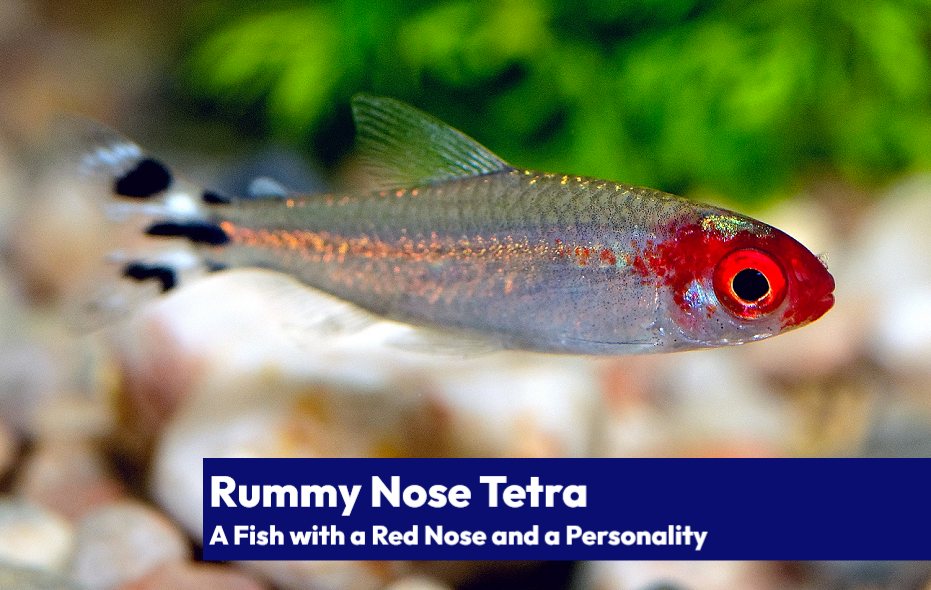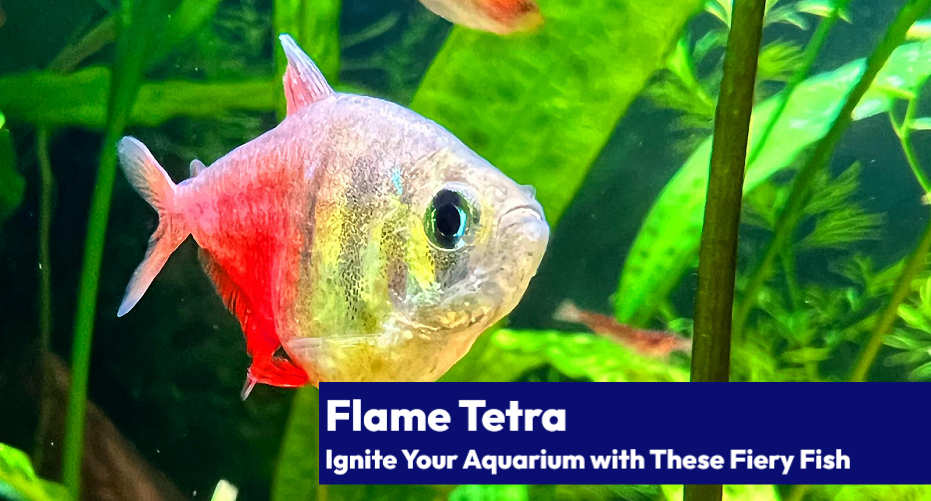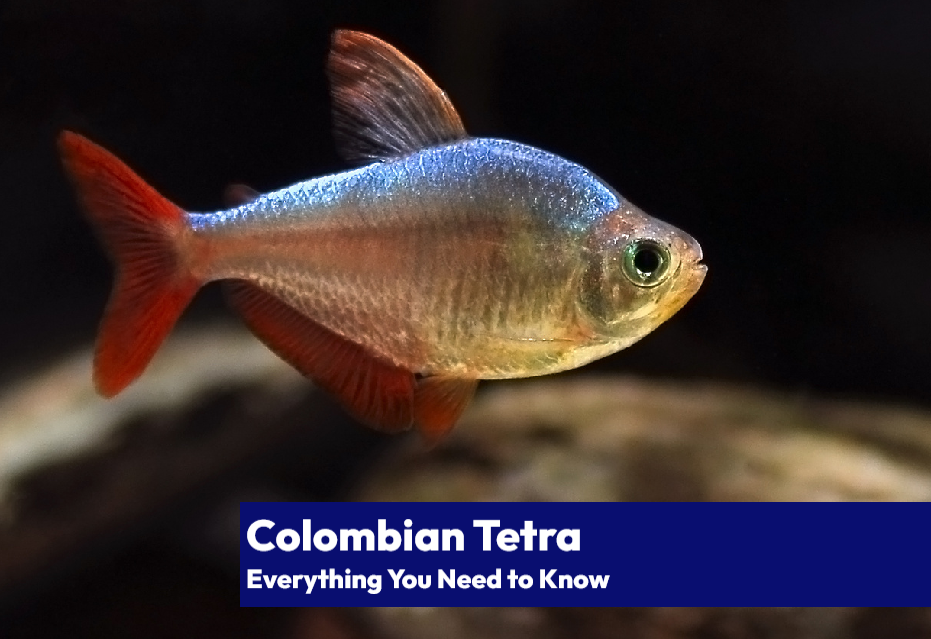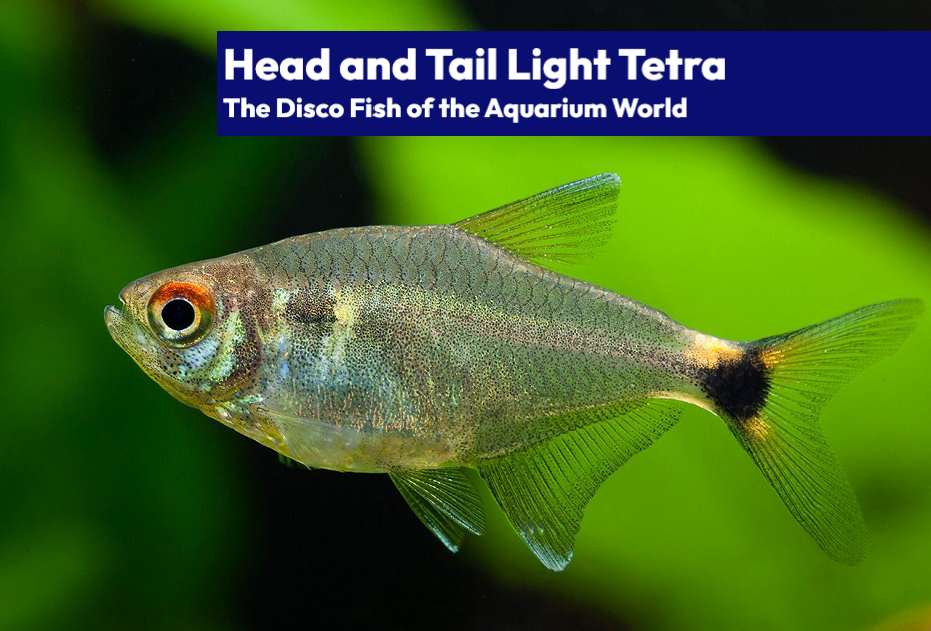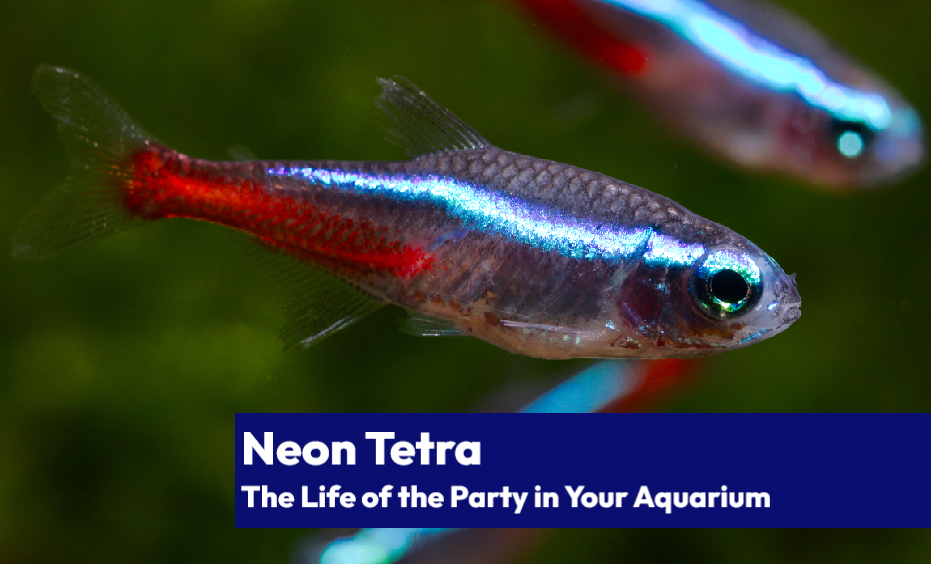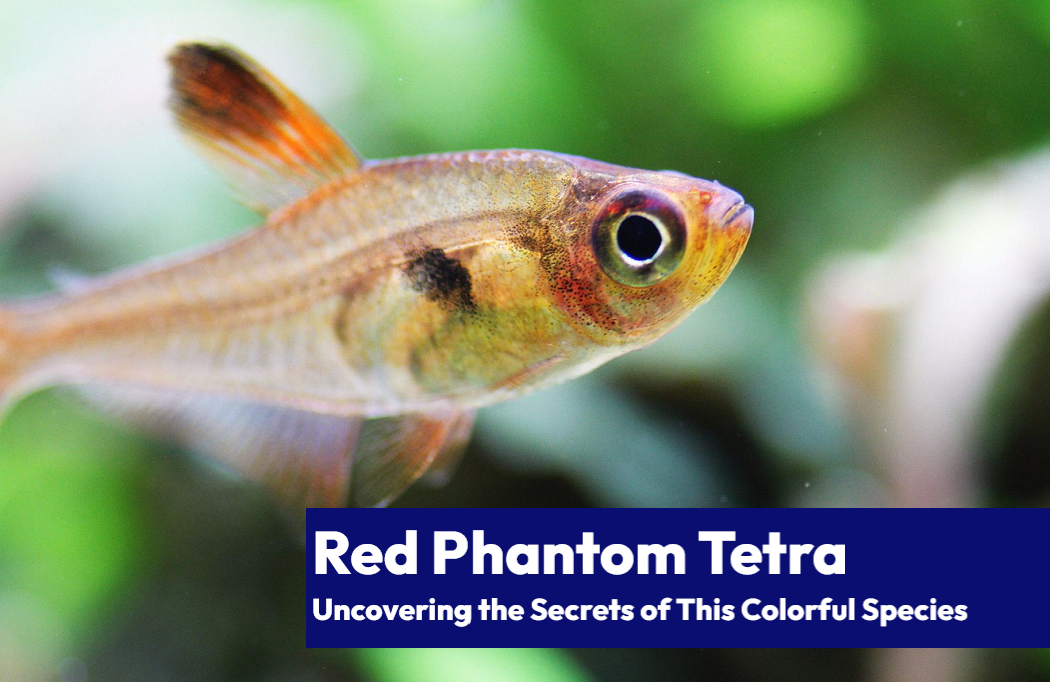If you’re looking for a fish that’s as beautiful as a rainbow and as lively as a carnival, look no further than the Congo Tetra. This little bundle of energy and color will bring joy and excitement to any aquarium.
The Congo Tetra, also known as the Phenacogrammus interruptus, is a freshwater fish that is sure to add a shimmering ray of color and excitement to any aquarium. With its fiery electric blue and orange hues, this fish is a true tropical beauty, resembling a miniature neon sign swimming through the water.
Let’s dive into the care requirements and habitat of this intriguing livestock addition and learn more about their diet, habitat requirements, suggested tankmates, history, and more.
| Care Data Point | Description |
|---|---|
| Scientific Name | Phenacogrammus interruptus |
| Average Size | 2.5-3 inches (6.35-7.62 cm) |
| Tank Size | A minimum of 20 gallons (75.7 L) |
| Water Parameters | pH: 6.0-7.0, Hardness: 5-15 dGH |
| Diet | Omnivorous, with a preference for live or frozen foods |
| Housing Requirements | Prefers a heavily planted tank with dim lighting and plenty of hiding spots |
| Behavior and Temperament | Peaceful and can be kept with other non-aggressive fish |
| Breeding | Egg-scatterer, prefers a breeding tank with soft, acidic water and fine-leaved plants |
| Tankmates | Compatible with other peaceful community fish |
| Socialization | Best kept in a group of at least 6 |
| Diseases and Illness | Susceptible to Ich, Velvet and Fin Rot. |
Appearance
The Congo Tetra’s body is elongated and slender, and it has a vibrant electric blue color on its back and orange color on its sides and belly. Its fins are translucent with a hint of orange. It’s an average size of 2.5 inches (6.35 cm) in length.

Lifespan
The Congo Tetra has a lifespan of about 3-5 years with proper care.
Average Size and Growth Rate
The Congo Tetra grows to an average length of 2.5 inches (6.35 cm) and has a relatively slow growth rate.
Tank Size
A minimum tank size of 20 gallons (75.7 liters) is recommended for a small school of Congo Tetras.

Water Parameters
The Congo Tetra prefers a pH range of 6.0-7.5, and a water temperature between 72-82°F (22-28°C).
Diet
The Congo Tetra is an omnivore and will eat a variety of foods, including flakes, pellets, and live or frozen options such as brine shrimp, daphnia, and bloodworms.
| Food Option | Description |
|---|---|
| Bloodworms | These small, nutrient-rich worms can provide a great source of protein and essential vitamins for Congo tetras. |
| Brine shrimp | Brine shrimp are a great source of protein and essential vitamins for the Congo tetra. They can be fed live, frozen, or freeze-dried. |
| Daphnia | Daphnia are small aquatic crustaceans that are a great food option. They are a great source of protein and essential vitamins, and can be fed live, frozen, or freeze-dried. |
| Tubifex worms | Tubifex worms are a great food option for Congo tetras. They are a great source of protein and essential vitamins, and can be fed live, frozen, or freeze-dried |
| Artemia | Artemia are small aquatic crustaceans that are a great food option for Congo tetra. They are a great source of protein and essential vitamins, and can be fed live, frozen, or freeze-dried. |
| Micro worms | Micro worms are small, nutrient-rich worms that are a great food option for Congo tetra. They are a great source of protein and essential vitamins, and can be fed live, frozen, or freeze-dried. |
| Mosquito larvae | Mosquito larvae are a great food option for Congo tetra. They are a great source of protein and essential vitamins, and can be fed live, frozen, or freeze-dried. They are also a great food for encouraging growth and coloration in Congo tetra. |
| Mysis shrimp | Mysis shrimp are a great food option for Congo tetra. They are a great source of protein and essential vitamins, and can be fed live, frozen, or freeze-dried. |
| Grindal worms | Grindal worms are a great food option for Congo tetra. They are a great source of protein and essential vitamins, and can be fed live, frozen, or freeze-dried. |
Housing Requirements and What to Put in Their Tank
The Congo Tetra prefers a well-planted tank with plenty of hiding places and open swimming space. They also enjoy a soft substrate and subdued lighting.

Behavior and Temperament
The Congo Tetra is a peaceful and active fish, and they should be kept in a small school of at least 6 individuals. They are also known to be timid and may be stressed if kept with larger, aggressive tankmates.

Breeding
Congo tetras have been successfully bred in captivity and are commonly available in the aquarium trade. Most of the Congo Tetras available for purchase in pet stores are sourced from Eastern Europe and the Far East, where they are bred commercially for the aquarium trade.
Breeding Congo Tetras in a home aquarium can be a bit of a challenge as their spawning is seasonal and getting a pair to spawn can be difficult. It’s best to simulate a natural breeding environment for them.
A large aquarium of at least 20-gallons tank is sufficient for breeding.
The water should be soft, acidic, with a pH between 6.5 and 6.8, a hardness of 1.5 to 3° dGH, and a temperature between 77 and 82.4° F (25 to 28° C). Filtering the water through aquarium-safe peat can also encourage spawning.
To provide a suitable spawning ground, bunches of live plants, java moss, or artificial spawning grass can be added to the tank. Try using a layer of mesh that is wide enough for eggs to pass through but small enough to keep the parents out to prevent eggs from being eaten. A small, air-powered sponge filter is needed for filtration and water flow. It’s more common for them to spawn at night.
Tankmates
The Congo Tetra is a peaceful fish and is compatible with other peaceful species such as Neon Tetras, Guppies, and Corydoras Catfish.
| Compatible Tankmate | Description |
|---|---|
| Neon Tetra | Neon tetras are a small, peaceful fish that are a great addition to a congo tetra tank. They have a similar size and peaceful nature, and their bright colors complement those of the congo tetra nicely. |
| Rummy Nose Tetra | Rummy nose tetras are another small, peaceful fish that make great tankmates for congo tetras. They have a similar body shape and size, and their bright red and white coloration adds a unique contrast to the tank. |
| Ember Tetra | Ember tetras are a small, peaceful fish that are perfect for a congo tetra tank. They have a similar size and peaceful nature and their bright orange coloration adds a pop of color to the tank. |
| Cardinal Tetra | Cardinal tetras are a beautiful, small fish that are perfect for a congo tetra tank. They have a similar size and peaceful nature and their bright blue and red coloration adds a unique contrast to the tank. |
| Black Phantom Tetra | Black phantom tetras are a small, peaceful fish that are perfect for a congo tetra tank. They have a similar size and peaceful nature and their black and white coloration adds a unique contrast to the tank. |
| False Rummy Nose Tetra | False Rummy nose tetras are a small, peaceful fish that make great tankmates for congo tetras. They have a similar body shape and size, and their bright red and white coloration adds a unique contrast to the tank. |
| Serpae Tetra | Serpae tetras are a small, peaceful fish that are perfect for a congo tetra tank. They have a similar size and peaceful nature and their bright red coloration adds a pop of color to the tank. |
| Hatchet Fish | Hatchet fish are a unique, peaceful fish that are perfect for a congo tetra tank. They have a similar size and peaceful nature and their sleek, silver bodies add a unique contrast to the tank. |
| Guppies | Guppies are a small, peaceful fish that are perfect for a congo tetra tank. They have a similar size and peaceful nature and their bright colors complement those of the congo tetra nicely. |
| Corydoras Catfish | Corydoras catfish are a peaceful bottom-dwelling fish that are great tankmates for congo tetras. They have a similar size and peaceful nature and their playful behavior adds an interesting dynamic to the tank. |
Diseases and Illness
Like all fish, they are susceptible to various illnesses and diseases. In this section, we will discuss the four most common illnesses and diseases found in congo tetras and their treatment options.
Ichthyophthiriasis (Ich)
Ichthyophthiriasis, commonly known as “Ich,” is a parasitic disease caused by the protozoan Ichthyophthirius multifiliis. This disease is characterized by the formation of small white spots on the fish’s body, fins, and gills. The fish may also display symptoms such as scratching, rubbing against objects, and increased respiration.
The best treatment for Ich is to raise the water temperature to 82-86°F (28-30°C) for a period of 3-5 days. This will accelerate the life cycle of the parasite, causing it to reach maturity and fall off the fish. Additionally, adding aquarium salt at a rate of 1-2 tablespoons per 5 gallons (18.9 L) of water will help to alleviate the symptoms. These natural remedies are more effective when used with a medication that targets the Ich parasite like API Liquid Super Ick Cure.
Columnaris Disease
Columnaris disease, also known as “Cotton Mouth Disease,” is a bacterial infection caused by Flavobacterium columnare. This disease is characterized by the formation of white cotton-like growths on the fish’s mouth, fins, and body. The fish may also display symptoms such as lethargy, loss of appetite, and increased respiration.
The best treatment for Columnaris disease is to use a combination of antibiotics and salt baths. Try API Furan-2 as a good treatment option.
Fin Rot
Fin rot is a bacterial infection that affects the fins of the fish. It is characterized by the fins becoming frayed, discolored, and eventually disintegrating. The fish may also display symptoms such as lethargy, loss of appetite, and increased respiration.
The best treatment for fin rot is to use a combination of antibiotics and water changes. A common antibiotic used is erythromycin. It’s important to note that for severe cases, it is recommended to keep the fish in a separate quarantine tank to prevent the spread of the infection to other fish. Dose API Fin & Body Cure per the manufacturer instructions.
Velvet Disease
Velvet disease, also known as “Gold Dust Disease,” is a parasitic infection caused by the protozoan Oodinium pilularis. This disease is characterized by the fish developing a golden-brown dust-like coating on its body. The fish may also display symptoms such as lethargy, loss of appetite, and increased respiration.
The best treatment for velvet disease is to use a medication specifically designed to target the parasite, such Fritz Mardel Coppersafe. It’s important to note that this treatment can be toxic to invertebrates, so it should not be used in a tank with invertebrates.
History and Origin
The Congo tetra, also known as the interruptus tetra or Phenacogrammus interruptus, is a freshwater fish native to the Congo River basin in Africa. The species is a member of the Alestidae family, which also includes the African tetra and the tiger fish.

The Congo tetra is found in a wide range of habitats within its native range, including rivers, creeks, and swamps. The fish is most commonly found in areas with slow-moving or still water and a sandy or muddy substrate. The species can also be found in areas with dense vegetation, such as marshes and swamps.
In terms of its conservation status, the Congo tetra is considered to be a species of least concern by the International Union for Conservation of Nature (IUCN). This means that it is not currently facing significant threats to its survival in the wild.
The Congo tetra was first described in the scientific literature in 1881 by Belgian ichthyologist George Albert Boulenger, a Belgian-British zoologist who described and gave scientific names to over 2,000 new animal species including the Congo Tetra.

In terms of its distribution, the Congo tetra is found throughout the lower Congo River basin, including the Kasai, Kwango, and Sankuru River systems. The species is also found in the upper Congo River basin, including the Lualaba and Lomami River systems.
In the wild, the fish is known to feed on a variety of food items, including insects, crustaceans, and small fish. The species is also known to feed on plant material, such as seeds and fruits.

The Congo tetra is a popular species for the aquarium trade due to its bright colors, peaceful nature, and ease of care. The species has been widely introduced to other countries and regions as an aquarium fish, and is now found in aquariums around the world.
Conclusion
The Congo Tetra is a stunning fish that will add a refreshing array of color to any community aquarium. It’s easy to care for, peaceful and active, making it a great choice for both beginner and experienced fish keepers. With proper care, they will thrive and bring joy to their owners for years to come.
Frequently Asked Questions
Q: Are Congo Tetras aggressive?
A: Congo Tetras are generally not considered to be aggressive fish. They are peaceful and can be kept with a variety of other fish species.
Q: How big do Congo Tetras get?
A: Congo Tetras typically grow to be around 3 inches (7.6 cm) in length.
Q: Do Congo Tetras have teeth?
A: Yes, Congo Tetras have small teeth in their mouths.
Q: Are Congo Tetras fin nippers?
A: Congo Tetras are not known to be fin nippers, but they may nip the fins of other fish species if they feel threatened or stressed.
Q: Can Congo Tetras live with Angelfish?
A: Congo Tetras and Angelfish can be kept together, but it is important to ensure that the tank is large enough to accommodate both species and that the water parameters are appropriate for both.
Q: Do Congo Tetras eat plants?
A: Congo Tetras are not known to eat plants, but they may nibble on soft-leaved plants.
Q: How many Congo Tetras should be kept together?
A: Congo Tetras should be kept in groups of at least 6 individuals. A group of 6-8 is ideal for a 55-gallon tank.
Q: Are Congo Tetras safe for cycling?
A: Congo Tetras can be used to cycle a tank with a “fish-in” cycle, but it is important to ensure that the water parameters are suitable for them and to monitor the fish closely for any signs of stress or illness. A fishless cycle is always a safer option.
Q: Can Congo Tetras and Guppies live together?
A: Congo Tetras and Guppies can be kept together, but it is important to ensure that the tank is large enough to accommodate both species and that the water parameters are appropriate for both.
Q: Can Emperor Tetras and Congo Tetras coexist?
A: Emperor Tetras and Congo Tetras can coexist, but it is important to ensure that the tank is large enough to accommodate both species and that the water parameters are appropriate for both.
Q: Can I stock all male Congo Tetras?
A: It is not recommended to stock all male Congo Tetras, as they may become aggressive towards one another.
Q: Do Congo Tetras like moving water?
A: Congo Tetras prefer still or slow-moving water. They do not like strong currents.
Q: Do Congo Tetras need shade?
A: Congo Tetras do not require shade, but they do appreciate having some areas of the tank where they can hide.
Q: Do Congo Tetras shoal?
A: Yes, Congo Tetras are shoaling fish and should be kept in groups of at least 6 individuals.
Q: Do Congo Tetras like hard water?
A: Congo Tetras are adaptable to a range of water hardness levels, but prefer water with a pH of 6.5-7.5 and a water hardness of 8-15 dGH.

Tim Priest, a renowned aquarium expert with over 15 years of experience in aquatic gardening and fish education, is dedicated to helping enthusiasts create stunning and thriving aquatic environments. As the founder of LearnTheAquarium.com, Tim shares his wealth of knowledge, passion, and expertise through engaging articles, educational resources, and personalized advice.
Discover the secrets to creating captivating underwater landscapes and maintaining healthy aquatic ecosystems. Join Tim on an exciting journey and let your aquarium adventure begin!

